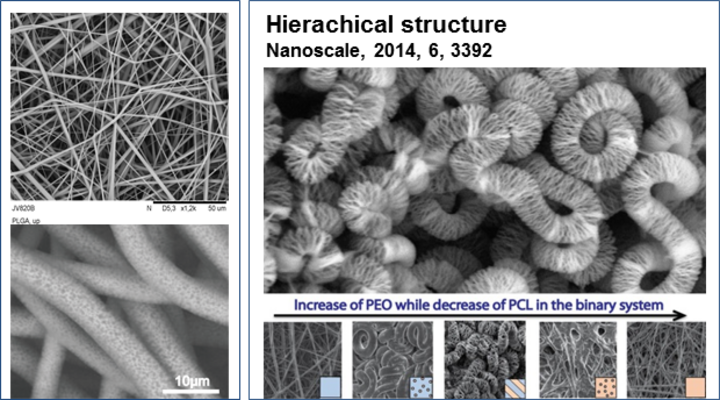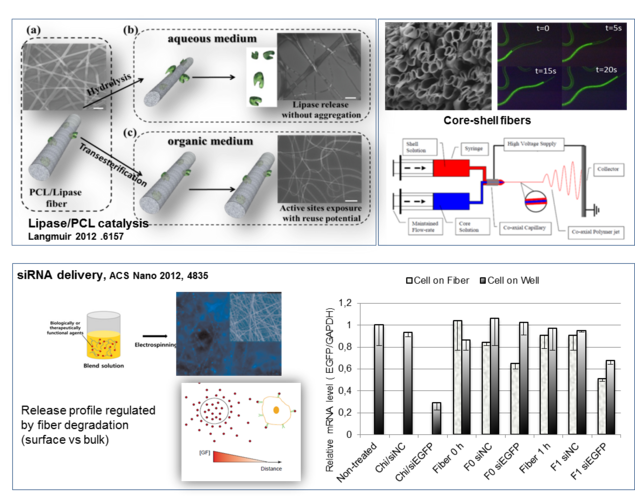Production of one dimensional nanomaterials with secondary morphology exhibiting unique functions is challenging. Single spinneret electrospinning normal generate straight fibers with limited surface porosity. Here we aim to develop novel structures. We have discovered for the first time that a nanoscale immiscible polymer blend solution electrojet can assemble into ultraporous interweaving microfibers. This intriguingly novel morphology originated from a blend of polycaprolactone (PCL) and polyethylene oxide (PEO) in a DCM–DMF mixed solution when the ratio between each component reached a threshold and when the electrospinning parameters were delicately controlled. The morphology, crystallinity, surface chemistry and wettabilities were characterized to understand the mechanism of formation. The interplay of the two semi-crystalline polymers and the pair of solvents/non-solvents with the electrospinning processing parameters was found to be critical for the formation of the unique structure.

Electrospinning is a straightforward and robust method to produce nanofibers with the potential to incorporate drugs in a simple, rapid, and reproducible process. Drugs can be embedded in the fiber through dissolution or dispersion in the polymer solution for single spinneret electrospinning.
Further, coaxial spinneret allows spatio-selective compartmentalization of materials in one single fibers, where either the sensitive therapeutics can be stabilized inside the core or co-delivered with temporal and spatio control.

A living system has a complex and accurate regulation system with intelligent sensor-processor-effector components to enable the release of vital bioactive substances on demand at a specific site and time. Stimuli-responsive polymers mimic biological systems in a crude way where an external stimulus results in a change in conformation, solubility, or alternation of the hydrophilic/hydrophobic balance, and consequently release of a bioactive substance. Here we aim to apply electrospinning to generate biomimetic nanofibers that are responsive to different stimuli, such as temperature, pH, light, and electric/magnetic field.
